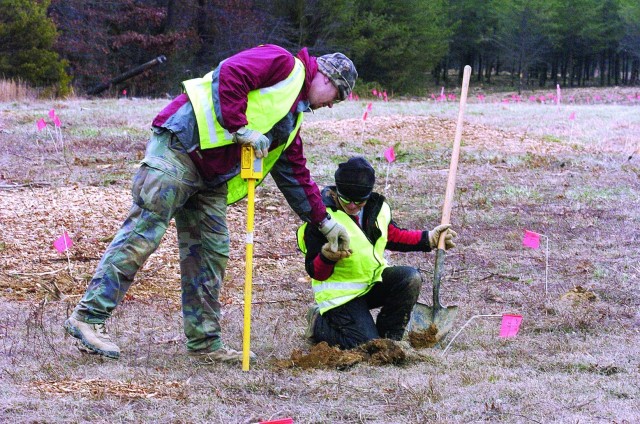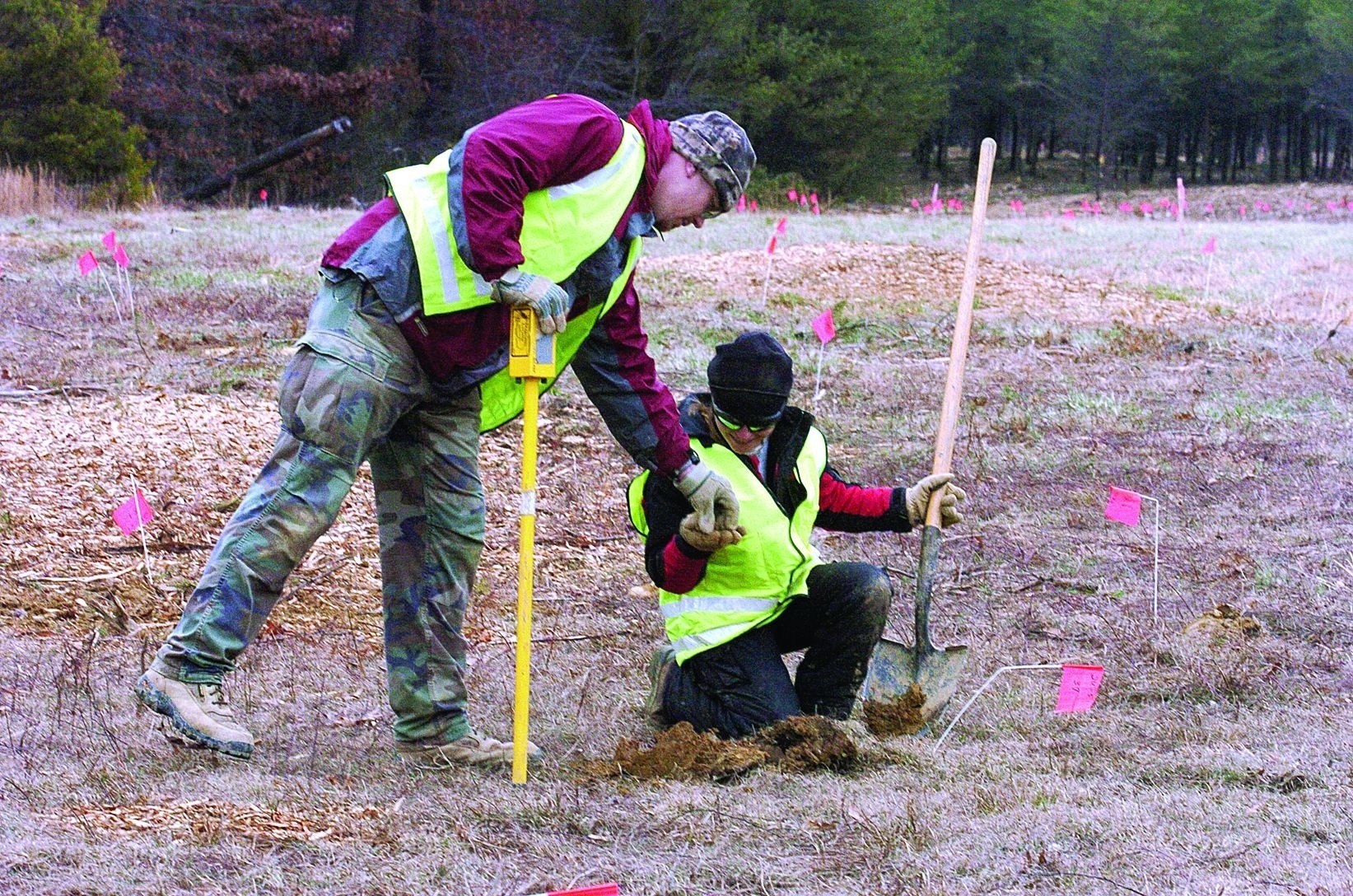Known to most as the Engineer Proving Ground, Fort Belvoir's North Area will be home to two major organizations coming to Belvoir as part of Base Realignment and Closure 2005.
A major step in the construction process is cleaning the land once used by the Engineer School from the Belvoir Research and Development Center for testing and waste storage to make sure it is environmentally safe, said Laura Curtis, environmental specialist.
"As a result of BRAC 2005 we are preparing that property for construction," said Curtis. "That preparation includes range clearance and solid waste management unit investigation and remediation, if required."
The Environmental Compliance office is working with three contracted companies, TetraTech Inc., Tidewater Inc, and Conti Environment Infrastructure, to identify the extent of the testing areas to determine if cleanup is required. If required, cleanup will be done before, or in conjunction with scheduled construction on the site, said Curtis. Another subcontracted company, Zapata Engineering, is completing the actual range clearance.
"Fort Belvoir has a long history of training in various areas of the installation. EPG happens to be one of those areas that was more intensively used for intrusive munitions, research and development and mine detection," said Kevin Kivimaki, environmental specialist with SpecPro, a government-contracted company involved with engineering, environmental and information management.
FBNA is approximately 820 acres, located approximately eight miles from post and was acquired by the Army in 1940, Installation Historian Gustav Person said.
Throughout the 1940s, 1950s and 1960s the grounds were used for a variety of activities. During World War II it was used as simulated airfield and at other times it was used for fuel oil storage and demolition activities, Person said.
In 1988 the Environmental Protection Agency contracted a company that identified regulated units or areas that had managed solid wastes of some nature on EPG. Those areas vary from drum storage areas and dumping sites to shop sweeping areas, anything that could possibly impact human health or the environment, said Curtis.
Fort Belvoir is also using records that were kept of the areas and aerial photographs to help determine if cleanup is required, said Curtis.
"We are doing an intensified clearance in known range areas and we are also sweeping the other areas," said Curtis.
Work on EPG has been ongoing since September 2006, and so far the workers have found less than 10 munitions, but they have found more than 26,000 pounds of scrap metal.
"We're finding bits and pieces of everything, anything and everything," said Kivimaki. "Because of the way we're looking with a Schonstedt, a magnetic locator, and geophysical means for detecting munitions. We also can detect any other metal that is down there. We don't know if [they] are munitions until [they are] dug up."
All of these items are examined by an unexploded ordnance device crew and then recycled.


Social Sharing